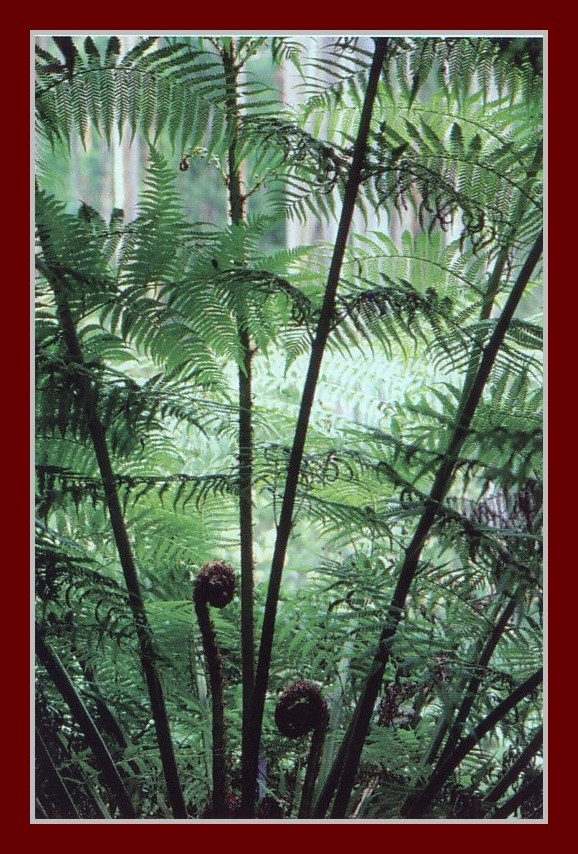The
plants in the Ellis Rowan garden are progressing well since their planting
in 2003, with many plants starting to establish their form and character.
Dan Marges (the iconic custodian of this section) is carefully guiding
these plants to maturity.
The plants were
initially planted closely, to ensure a combination of instant and massed
effect. Subsequent care has required the need for some targeted and
discreet thinning and pruning to allow the area to retain its vibrancy
and harmony, without any obvious signs of 'gardening' having been done.
For example :
Acacia leprosa
'Scarlet Blaze'. The amazing red-flowered wattle can produce a lot of
new growth when conditions are favourable (as these ones did last spring).
This can lead to the plants becoming top heavy and even blowing over
- a potential heart breaker ! To avoid this we have carefully
pruned them three times this growing season, taking excess weight out
of the crown. At the same time, we have carefully lifted them to arch
just above passers-by. There is a chance that this could lead to visitors
being caressed on their heads, and at flowering time, gently showered
with red wattle flowers. (We hope that you cannot see evidence of this
work and that they look quite natural).
Correa bauerlenii
has needed regular tip pruning so it does not smother nearby friends
(the plant kind). As can be seen in this garden, it responds well to
this regular light pruning, and could even be formally pruned, if so
desired, into something bizarre such as a set of chess pieces or a small
pony ! ? (Very
unlikely at the ANBG, but something people could try at home.)
Other plants have
been allowed to develop naturally. For example the Banksia spinulosa
'Stumpy Gold' are starting to hug the boulders as we had hoped. They
are a good example of a plant with form that happily merges together
with little need for 'steering' with the secateurs. If you have a good
imagination you could almost see them hugging granite rocks by the sea,
which is where many of these dwarf or miniature forms of Banksia
spinulosa have their origins.
Dianella tasmanica
has been simply left to its own devices, and is 'clumping up' nicely
in the lower parts of the simulated dry creek bed.
When the area was
planted we placed a strong emphasis on the plants selected for the garden
blending with others nearby; this was based on each group having a key
common characteristic connecting it with the next group (with the intention
of having an area that is mostly 'easy' on the eye rather than a garden
of dramatic contrast and abrupt change).
There are endless
options for mixing and matching using this technique. It is a good idea
to group plants still in their pots on the ground to see if the groups
'work' well together side by side, before planting them in their final
position.
In some cases we
matched similar foliage types/shapes as in the oval foliage of Leptospermum
'Lavender Queen' with Platyscace lanceolata 'Edna Walling Flower
Girl'. Another combination matched shiny bright foliage as in Correa
bauerlenii with Libertia paniculata and Blechnum nudum.
The combination of Lomandra confertifolia ssp rubiginosa
with the grey foliage of Chrysocephalum apiculatum and Grevillea
dimunata relied on matching foliage colour. Form was used to blend
species as in the case of the horizontal habit of Homoranthus pappilatus
with Micromyrtus ciliata.
Correa alba
(compact form and Correa 'Western Star' have started to blend
with the existing Correa alba next to the cafe, tying together
the old and the new and showing the variation and combinations possible
within the Correa alba group and its progeny.
We once again thank
the Friends for their contribution enabling us to make this garden happen.
Both the partial funding, the invaluable 'What's in Flower' guide and
regular feedback have helped bring the Ellis Rowan Garden to where it
is today.


